One night – more than twenty bears
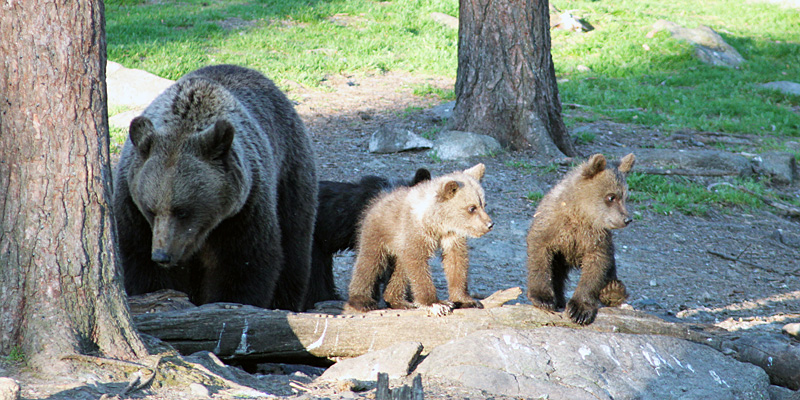
There are plenty of bears in the wilderness of Martinselkonen in eastern Finland. Thus, also people to see them. Few go to see bears without company of some kind.
The early summer heat in the Martinselkonen wilderness raises the temperature up to nearly 30 degrees Centigrade. Gnats pester us in the open courtyard of the Wilderness Centre, but in spite of this we long to be in the depths of wilderness.
On departing, our guide, Mr Jarno Kela takes a head count. ”Just to know how many of us he’ll have left behind,” some of us snigger.
First, we drive along forest roads for nearly ten kilometres, then walk some two kilometres in the forest.
Ravens begin to croak nearby. ”Our doorbells,” says Kela to a German member of our group.
Finally we get there, to hides concealed in the forest. It is five p.m.
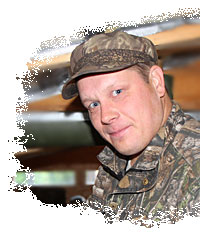
Only the German has a hide to himself. Our group, eight people in all, including the guide, take one of the two larger hides, the rest take the other one.
Narrow windows are placed in the upper parts of the walls, and below them are adjustable chairs. We have a biological toilet at our disposal and cots with sleeping bags – we will spend the whole night here.
And after just a few minutes the first bear arrives. Cameras aimed through the holes in the textile curtains start to click when a cub in its second year, just separated from its mother, stretches its limbs in the early evening sunshine.
We are close to the old-growth forest protection area of Martinselkonen, two kilometres away from the border to the Russian Federation. The sweat created by the heat and the walk starts to dry, but the air in the hide is still sweaty. It’s going to be a long night.
Bears are individuals
All in all, around twenty bears have been seen around the hides this summer, according to Kela. Some of them have even been named. Bears are individuals when it comes to colour, size and behaviour.
The brown bear (Ursus arctos) is the biggest land predator in Europe. Bear families consist of a mother and cubs. Additionally, single males and cubs separated from their mothers also roam in the forests.
Female bears give birth every 2 to 4 years. There are 2–3 cubs in the litter, and while not unheard of, four cubs would be a large litter.
The cubs are born during the hibernation, which lasts some six months. The mother and the cubs stay together the following summer and winter. The separation takes place during the cubs’ second summer, after which the mother can mate again.
All in all there are some thousand bears throughout mainland Finland, even in the close vicinity of the capital. Most of the population is, however, found in eastern Finland. As to the Red List of endangered species in Finland, the brown bear is classified as near threatened.
There are no boundaries in the wilderness
This summer has been good for the bears in Martinselkonen. And these bears really are wild; they live freely in the wilderness and come to the hides as and when they feel like it from different parts of the wilderness area. This means that they are not domesticated by any criteria.
”If there was a shortage of food, the larger bears would not allow the newly-separated youngsters to come here,” says Kela. However, there is plenty of food in the wilderness, and the slaughterhouse rejects and dry dog food spread around in the vicinity of the hides are just a tasty extra on top of what the forest offers.
What makes it easier for a bear to cope is that it is omnivorous. It is a predator, but most of its diet consists of vegetable matter, and as far as animal food goes, it is most partial to carcasses.
All this can be found easily in woodland tracts, such as Martinselkonen and the adjacent extensive wilderness areas across the border in Russia. There is a fence built to stop reindeer on the border, but it is not an obstacle for a bear: it simply takes hold of the fence by its paws and tears a hole in it.
There are no boundaries in the wilderness. In Russia there are large lakes, which is where the white-tailed eagle (Haliaeetus albicilla) has arrived from, just to sit at the top of a large pine.
The eagle returns after staying for just an hour, obviously because the large number of bears means that fishing will be easier over the lakes. The dozens of gulls flying around through the night obviously think otherwise.
Bears are fast and strong enough
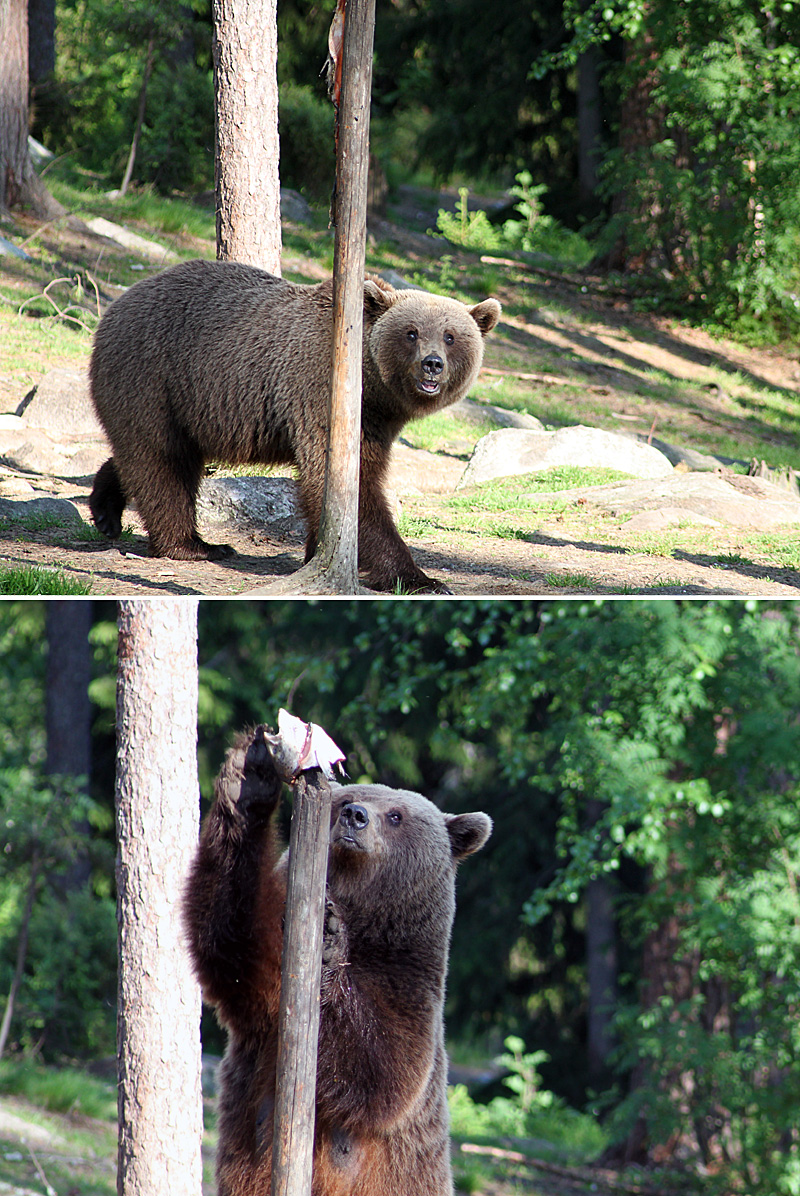
After the newly independent cub leaves, the branches of broadleaves to the right start moving. A mother bear with her two yearling cubs come in sight.
This mother is sensitive to sounds. Bears have exceptionally good hearing, but normally these bears are used to the sounds from hides.
Not so this mother. She flinches at the first click of a camera, rises to her hind legs and eyeballs the hide very carefully – which naturally leads to more clicks.
This family seems to favour free upbringing and the cubs are allowed to move a long way from their mother. But the leniency is deceptive: getting out from the hide is absolutely forbidden during the whole night, whether or not there are bears to be seen.
”There may be some anywhere even if we do not notice them. If you take only a couple of meters’ walk outside and the bear considers it a danger, you may be very rudely surprised,” says Kela.
A bear can be very fast. It cannot kill an elk by giving chase for any distance, but with a surprise attack it is easy: after two or three leaps its speed may reach 60 kilometres an hour and it can break the backbone of an elk with just one swipe.
Size does not mean everything
As proof of invisibility, a lone male bear crawls from the alder bushes on the left, favouring his hind leg. ”In early May he walked on three legs only, but he seems to be getting better,” says Kela.
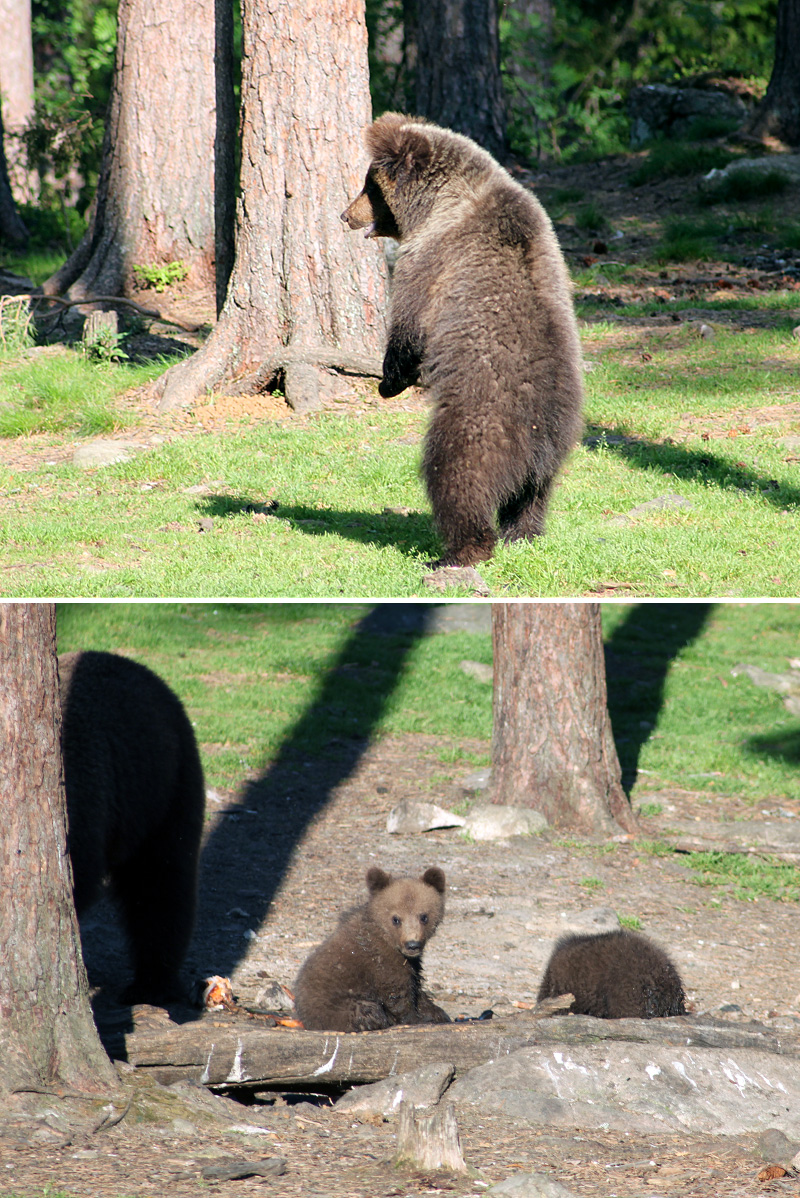
This bear is dark and big, yet not abnormally so for a male. ”An adult female bear weighs 80–120 kilograms, while a male may weigh 300 kilos or more,” says Kela.
The reason is interesting: male bears continue to grow until about the age of 12 years, while females stop growing at about age 4–5 years, when they reach puberty. After that, bearing cubs take up the energy which the males use to grow bigger.
Bears usually live for some decades. ”The highest verified age of a bear in Scandinavia is over 50 years,” says Kela.
Nevertheless, size does not mean everything. Throughout the night, the limping male has too little courage to come to eat, because he is afraid of mothers that protect their cubs with furious rage.
After the first family disappears, the next one, three cubs with their mother appear. In this family the discipline is clearly stricter. The cubs are allowed to play around, but only close to their mother.
Still, all of them do not play. One seems to be of a philosophical bent and prefers to be on its own, digging the soil with its forepaws, while the other two cannot stop teasing each other.
These cubs were born this year and look just like all storybook bears. On the other hand, an adult bear looks very different and its shape or movements do not arouse feelings of affection – respect would be closer to the mark.
Customers pay for seeing bears, but in safety
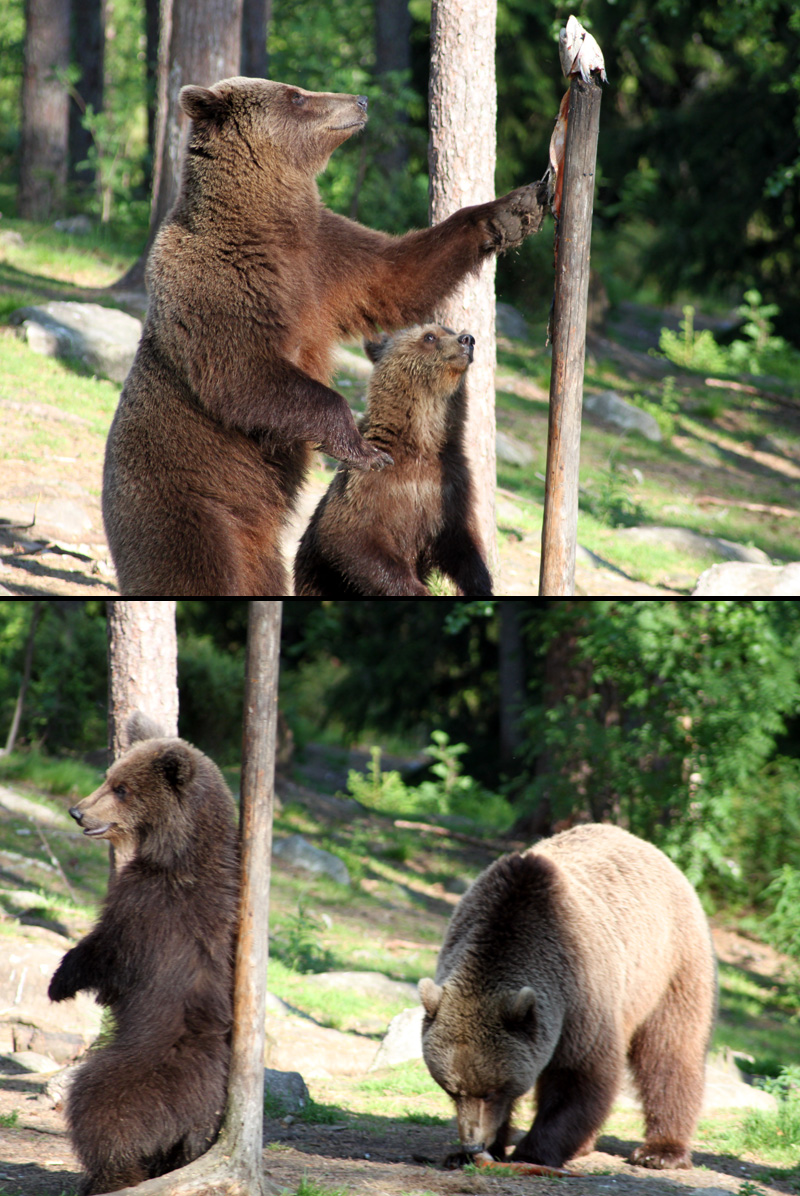
The Martinselkonen Wilderness Centre has given a new lease of life to an abandoned frontier guard base. Bear-watching seems to be a good business, despite the fact that anyone can try to find bears in the forest on their own.
However, no ”wild” bear-watchers have shown up at the hides. The customers of the Wilderness Centre pay not only for safety while watching, but also for reliability: those with the necessary skills are really able to lure the bears to the hide, but it requires effort and a good spot.
”If you just wander around in the forests, it may take decades before you see a bear,” says Mr. Markku Määttä, owner of the Wilderness Centre.
As to the spot, there have been some difficulties in the previous years. The Centre started its bear-watching activities 16 years ago on lands rented from the state-owned forestry company Metsähallitus.
But then, about a decade ago, the area was combined with the newly-established old-growth forest protection area of Martinselkonen. And since it is not possible to carry on this kind of activity on protected lands in Finland, the bear-watchers had to move.
Subsequently, Metsähallitus offered the Centre the location which they now use. Bear-watching could be continued.
By now there are so many bear-watchers that the Centre’s three guides are fully occupied for the whole season, lasting from March or April until the 10th of August. Nor are they the only employees of the Centre – during the season it employs 9–10 persons in the kitchen and in transport, for example.
This package deal includes a pre-trip lunch at the Centre. It also provides the hides as well as hot and cold drinks and sandwiches for the night. In the morning, the bear-watchers return to the Centre to enjoy the final item in the package: breakfast. A morning sauna may also be added on request.
Finns are not interested in bear-watching
About one thousand people overnight at the Wilderness Centre annually. 80 percent of them come from outside Finland.
Watching bears does not interest Finns, perhaps because they are not used to paying for a visit to a forest.
According to Määttä, this is a new type of service in Finland. In Africa, for example, similar activity has long traditions. ”For those living outside Finland this is of interest, and more and more the interest focuses on northern nature,” says Määttä.
Finnish customers tend to be a bit suspicious. They may ask, for example, whether it is certain that there will be bears. ”They may ask if they could get their money back if there are no bears,” says Kela.
There are many answers to such as question, one of them being that if you want to be absolutely sure, you should go to a zoo.
But as an experience, a visit to a zoo is not much when compared to wild forest. ”People appreciate wild nature and free animals,” says Määttä.
Another answer is that yes, there will be bears. We, for example, seem to have ended up seeing all the bears, over 20 in total, that have been seen at the hides this summer.
The best season to see the bears is in July, but bears can generally be seen throughout the year. The season ends, however, on the 10th of August, because the bear hunting season starts on the 20th.
Danger is always present in the wilderness
But let us return to the hide, where everybody woke up around half past two in the night. At that point, a female and two cubs could be seen.
Danger is always present in wilderness. There was also a male bear in the vicinity, and the mother thought that he came too close to the cubs. The threat was real; male bears may kill the cubs. This may seem odd but is nevertheless reasonable.
For the male, it is just a way of making his own genes more successful.
This time, the mother mounted an attack with a great roar. The male quickly retreated.
And what did the cubs do? They climbed, quick as lightning, to the top of a 25-meter pine and did not come down for a long time. After chasing the male away, the mother took a long time to persuade the cubs to come down. After half an hour they obeyed, again with unbelievable agility in a few seconds.
Peace returned to Martinselkonen.
Homepage of Martinselkonen Wilderness Centre.
Kirjoita kommentti